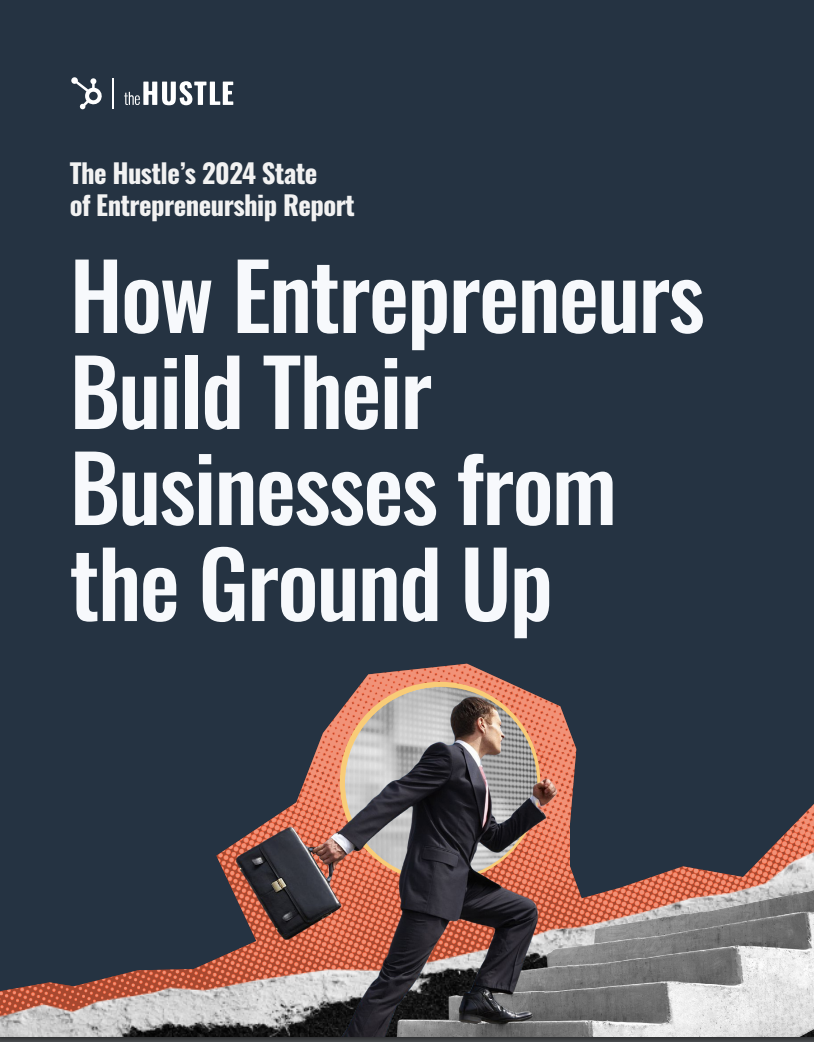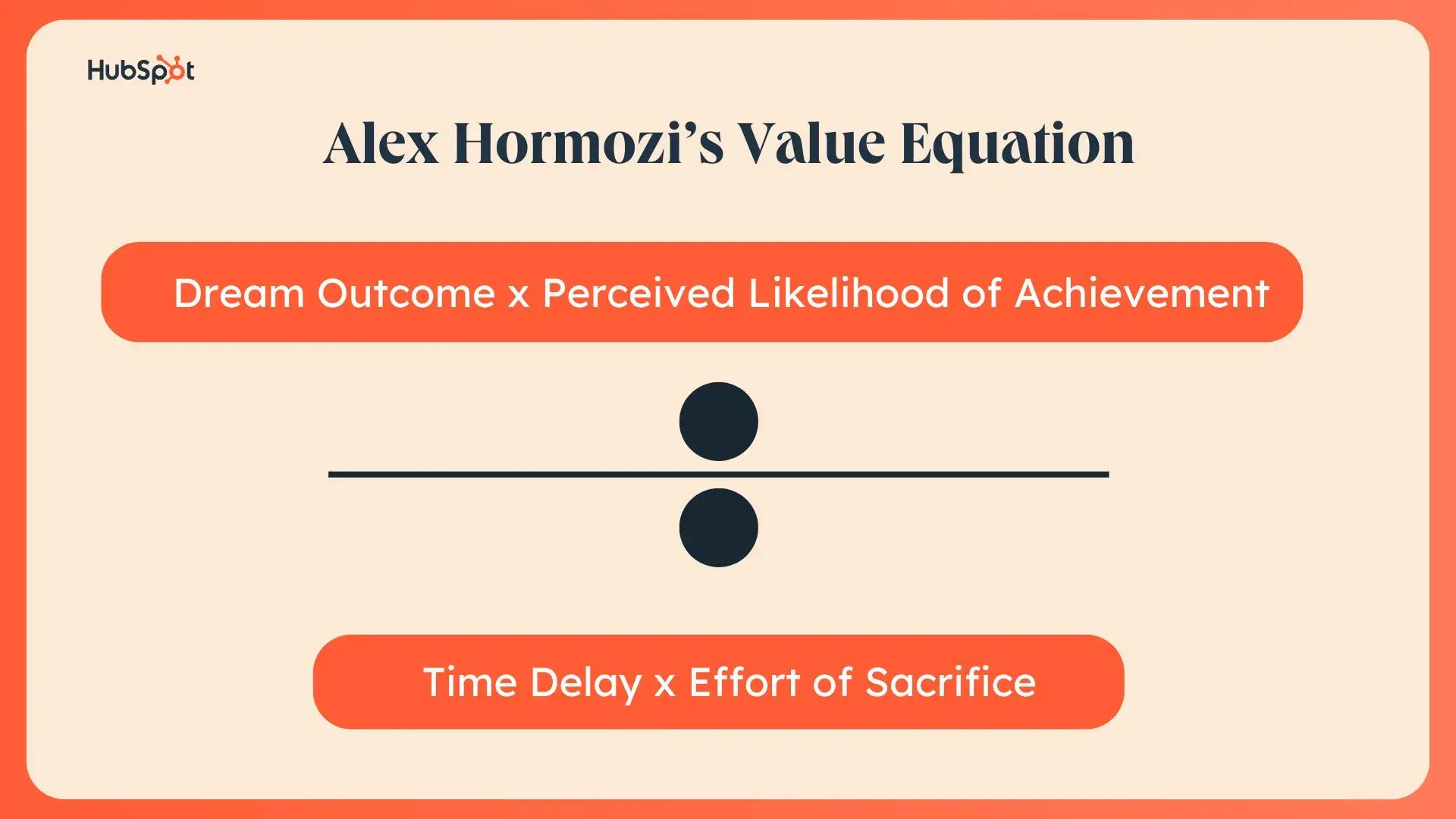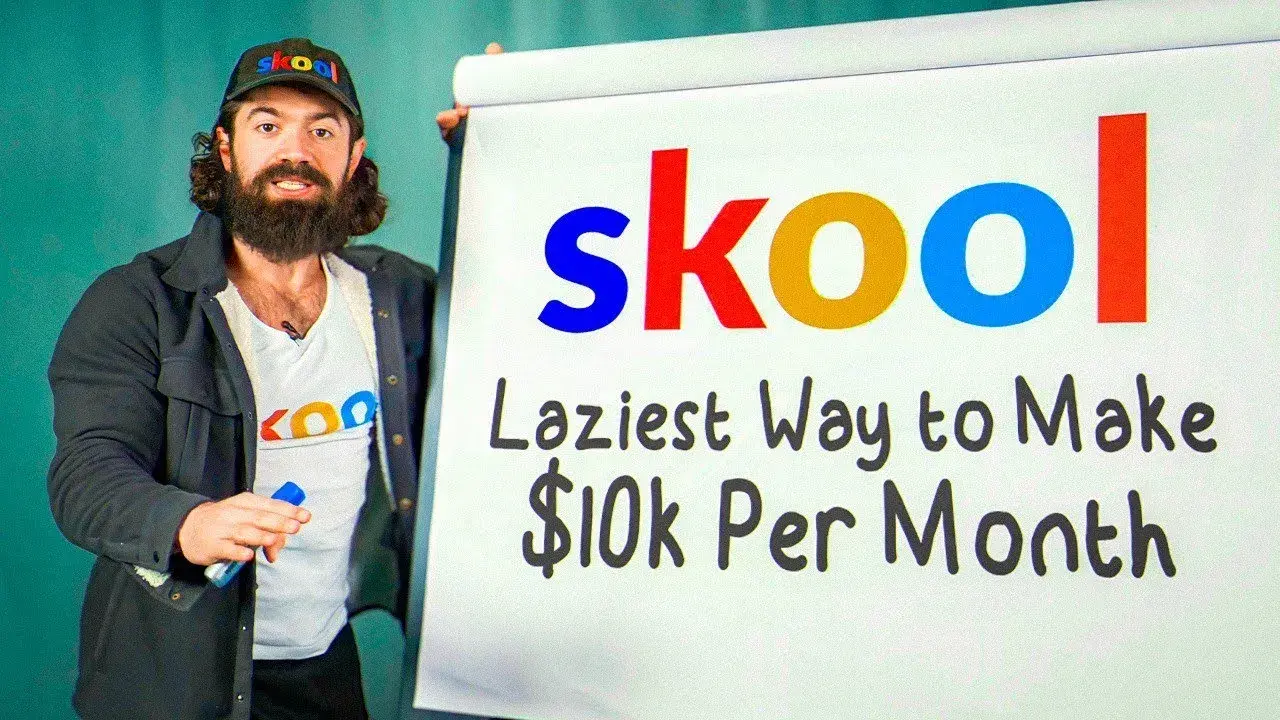As a business owner, you’re bound to make some mistakes and encounter a few business failures. There’s no shame in that.
Download Now: 2024 Entrepreneurship Trends Report
And if it makes you feel any better, Alex Hormozi, CEO and Founder of Acquisiton.com, isn’t afraid to admit that he’s done this plenty of times in his entrepreneurship, investment, and philanthropy journeys. If anything, he’s more than happy to dish out all the details, including his strategies for how he bounced back.
In this article, I’ll share scriptures from Alex’s bible for recovering from business failure, how he’s turned his missteps into major wins, and his recommendations for refining a business model that’s on its last leg.
Table of Contents:
- Why do businesses fail?
- How to Recover from Business Failure (11:00 of MFM)
- The Business Behind Acquisition (37:00 of MFM)
- Hormozi’s Multimillion Playbook: Key Tips and Takeaways for Entrepreneurs (18:13 of MFM)
- Investments and Plays That Hormozi’s Watching (28:14 of MFM)
- It’s Never Too Late to Get Back on Your Feet
Why do businesses fail?
When Alex Hormozi made his first major business oopsie, he shared that his mistakes were attributed to two things: Being a bit too trusting (when you’re a first-time boss, it happens, you learn from it) and having a faulty business model.
When he first began experimenting with entrepreneurship, Hormozi was flipping gyms the best way he knew how. He’d fly out to various locations, sell memberships on behalf of the gym, and keep upfront cash from acquired customers; the gym itself would keep the actual members/revenue made from memberships.
And although this was working well for a long time, after a while, it just wasn’t. “The more I sold, the more refund risk I exposed myself to,” Alex told My First Million hosts Sam Parr and Shaan Pari.
Now that Alex has made it out of the initial turbulence that is the trial phase of starting a business venture from scratch, he’s now able to take a step back and offer insights that can help others avoid similar pitfalls.
In the next section, check out his takes on how to salvage your business from a rough patch.
How to Recover from Business Failure
Here’s Hormozi’s advice on how to turn around a sinking business:

Entrepreneurship Trends Report
Unlock the future of entrepreneurship with this free report from HubSpot and The Hustle.
- 92% of entrepreneurs have no regrets about starting their business.
- 61% find customers through powerful word-of-mouth referrals.
- 37% of entrepreneurs are targeting higher ARR in the next year.
- And more trends!
Download Free
All fields are required.

1. Find the hole in your business model, then patch it quickly.
“I had a hole in my model … I was selling, and other people were delivering,” Alex confessed.
“Then, those people would tell customers to refund their money and sign up with them directly for half the price of what I was asking. After a while, I realized that I should just cut the middle man out and start selling straight to customers.”
Sometimes, the “hole” in your business model may have not been there to begin with. And sometimes it appears over time; then, you only notice that it’s there because something stops working the way it should.
The point is, if you identify that something within your business isn’t working or providing the results you want to see, don’t be afraid to pivot. If you don’t, your business will be the first thing that suffers.
2. Show them how.
When it came down to reinventing the wheel of his business model, Alex said, “I think we were just doing it wrong. I think we need to show them how we fill gyms rather than flying out and filling it for them.”
He followed, “We did that, then I called the 30+ gyms that we turned around and said, ‘Hey. Remember that thing I did? Want me to show you how I did it?’ Almost all of them said yes and I made about 240,000 in profit.”
As a business owner, when you take a step back and think about what you’re actually offering to clients and consumers, you have to consider what would happen if you were to monetize access to your expertise, not just your ability to get things done.
The Business Behind Acquisition
When it comes to Acquisiton.com, one of Alex’s leading business ventures, he admits that he’s “better at building than buying.” However, when he says “build,” he doesn’t mean he’s taking apart the business from scratch. In actuality, he means getting in there and working with what he’s already got on his hands.
“The nature of having inbound deal flows is … we get weird deals. They’re very interesting,” Alex admitted.
When it comes to cash flow deals, things look different based on every company that Alex and his team work with. “Sometimes, I’ve gotta buy out a partner, and it’s very weird and terrible … and some people don’t want to get into that. But we’re operators, so we’re happy to get into it, and we get really good evaluations out of it,” he said.
Often, what’s needed from the Acquisition.com end changes based on the company they work with. In one particular case, while working with a B2C publishing business, Hormozi was able to convince founders at the company to shift its perspective on a potential upselling method.
“I was like … this has nothing to do with what we do … It was a deal breaker for me,” he continued. “Then I suggested that we survey the audience. I told them, ‘Put your offer next to my offer. Just see what they want.’ 85% of people wanted my offer. It was a great moment.”
Hormozi’s Multimillion Playbook: Key Tips and Takeaways for Entrepreneurs
Hormozi is clearly committed to results, especially when it comes to devising plans for businesses (even if that means going back to the drawing board a few times). Personally, I think he’s so great at what he does because he’s able to think strategically through the part that people often rush through (but matters most): Cultivating an offer that is truly effective for his target market.
Check out his playbook for how he’s done this for his own business (and others) below:
1. Master the value equation.
“You have to understand how to create value so you can charge as much as possible and convert as many people as possible,” Hormozi explains.
When it comes to creating an offer that meets the needs of your audience, Alex urges folks to master the “value equation.” The value equation, in essence, is simple, only consists of a few variables, and each of those variables represents elements of the buyer journey and consideration process. It looks something like this:

Although the value equation may seem like it’s got a lot going on, Hormozi’s understanding of it makes it easy and digestible for folks. Check out his breakdown of the value equation below:
- The Dream Outcome: This variable represents when your customer evaluates if their investment in your product or service will present them with the results they’re looking for. “This is what separates whether someone’s even interested in your category of offer or not,” he explained.
- Perceived Likelihood of Achievement: This variable represents when your customer determines if they’ll get the best outcome by choosing your product or service. Alex elaborated, “You go to the person with more experience because the perceived likelihood of achievement – [the likelihood] that you’ll get what you want – is significantly higher, so you pay for [the more quality service].”
- Time Delay: This variable represents how long it’ll take for your customer to get those desired results. “This is the measurement of how far your customer will have to wait between when they buy your product and when they’ll start seeing results they want,” Alex noted.
- Effort of Sacrifice: This variable represents the things your customer will have to begin doing (aka how much effort they’ll have to put in) as a result of a purchase. “These are all of the things that your customer may have to stop doing in order to get the results they want,” he further explained.
Once you’ve got a grasp on the ins and outs of the value equation, you’re bound to know the ins and outs of your customers.
Alex added, “You have to look at the post-purchase steps, deconstruct them, and then include those things within the offer, so the customer feels like those little things they’d have to spend extra money on or time on are already available to them.”

Entrepreneurship Trends Report
Unlock the future of entrepreneurship with this free report from HubSpot and The Hustle.
- 92% of entrepreneurs have no regrets about starting their business.
- 61% find customers through powerful word-of-mouth referrals.
- 37% of entrepreneurs are targeting higher ARR in the next year.
- And more trends!
Download Free
All fields are required.

2. Get granular about the steps it’ll take to get results.
When it comes to securing the bag (and a loyal customer base), Alex strongly advocates for going all the way. And by “going all the way,” he means getting almost scarily specific about what’s going on in your customer’s mind.
“Itemizing all the issues a customer would have to do as a result of a purchase – things that increase risk, make results take longer, things that make them start doing things they hate – then creating solutions for those issues … that’s what creates a valuable offer.”
As a business owner, you’ve got to aim to not only acknowledge all the touchpoints of a customer’s buyer but to solve for them, too. Oftentimes, the only difference between your product or service and a competitor’s is what’s being given to them.
3. Conversion rate and increase in product/service price are one in the same.
As Alex mentioned above, you’ve got to think big when it comes to developing an offer that’s actionable for your customer base. Plus, this ideation process goes hand-in-hand with how you’ll customize the value equation to your own venture and, furthermore, identify ways to make your offer impactful.
“The higher the conversion for the offer, the more validation there is for upping the price,” Alex said.
And, when you really break it down, this ratio makes sense. Simply put, folks are willing to invest in what works, so if there’s guarantee that your service or product will 100% fulfill their needs and wants, they’ll be more than willing to become loyal clientele.
Investments and Plays That Hormozi’s Watching
According to Hormozi, his procurement of Skool was one of his best deals yet.

Recently, Alex invested in Skool, a SaaS company turned community platform focused on offering courses and events – all related to personal development and learning – to its growing user base. However, as someone who had already invested in multiple companies, Alex wanted to ensure that his decision to partner with Skool was well-informed.
“A huge percent of my audience are people who want to start a business. So, there’s this entire part of my audience that wants to start a business, and I wanted to have something for them … without cannibalizing Acquisition.com,” he articulated. Alex then further clarified, “It had to be something that was demand-constrained, that would help people start a business. [Ultimately], it had to be a scalable thing.”
Plus, his biggest takeaway from this investment? Getting it at the right time. For Alex, getting Skool at where it was in its lifecycle was critical for how he envisioned its future, especially with his game plan for expansion involved. If he’d gotten Skool any later than when he did, he figured that he’d have less leverage and less value to add.
All-in-all, if I were a business owner like you, here’s what I’d extract from Alex’s Skool acquisition: Making a strategic investment – of any talent, company, or resource – will swing in favor of your entrepreneurial growth and, eventually, success.
Plus, what makes the investment “strategic” is not the investment itself. It’s how you see it creating synergy with the audiences and endeavors that you already have.
It’s Never Too Late to Get Back on Your Feet
Alex Hormozi’s entrepreneurial journey is a wild one, but the key takeaway from it is crystal clear: Business bumps and bruises are part of the game, even the best entrepreneurs face setbacks.
The important thing here is to learn from your mistakes, dust yourself off, and get back out there. Sometimes, the biggest breakthroughs come after the biggest breakdowns.
But if you leave this article sincerely having learned nothing else, take this with you: Every setback is a setup for a comeback (or whatever Dr. Umar said).

Entrepreneurship Trends Report
Unlock the future of entrepreneurship with this free report from HubSpot and The Hustle.
- 92% of entrepreneurs have no regrets about starting their business.
- 61% find customers through powerful word-of-mouth referrals.
- 37% of entrepreneurs are targeting higher ARR in the next year.
- And more trends!
Download Free
All fields are required.


.jpg)
![Freelancer vs. Entrepreneur: How Jim Huffman, CEO and Founder of GrowthHit, Went from Freelancer to Owner of a 7-Figure Agency [+ Tips for Aspiring Entrepreneurs]](https://53.fs1.hubspotusercontent-na1.net/hubfs/53/freelancer-vs-entrepreneur-1-20241021-8630800.webp)
![How Calm's CEO Manifested a Meditation Empire [Trends Interview]](https://53.fs1.hubspotusercontent-na1.net/hubfs/53/calm-67214a68aa359.webp)
.png)

.png)
.png)

.jpg)
![How 13 Entrepreneurs Went From Zero to Billionaire [Infographic]](https://53.fs1.hubspotusercontent-na1.net/hubfs/53/zero-to-billionaire.webp)